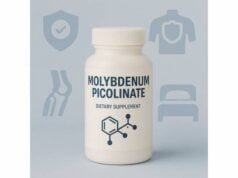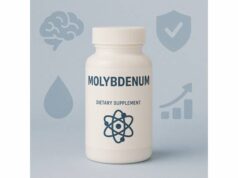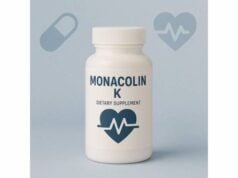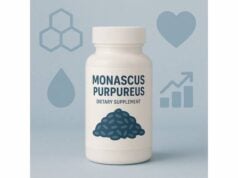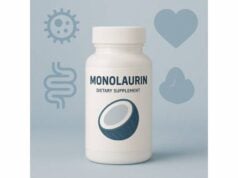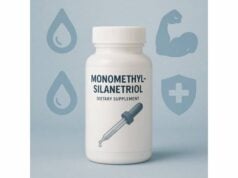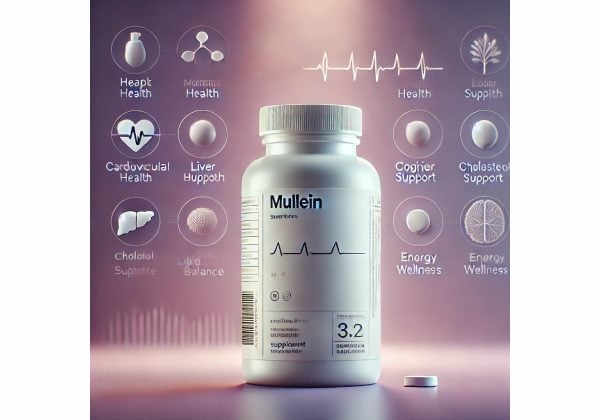
Mullein (Verbascum thapsus) is a tall, felted plant long used in folk and traditional European medicine for dry, irritating coughs, sore throat, and mild bronchial catarrh. Its leaves and flowers contain soothing mucilage, phenylethanoid glycosides (notably verbascoside), flavonoids like luteolin and quercetin, and small amounts of saponins—an unusual blend that helps coat irritated tissues while gently loosening thick secretions. In modern practice, mullein shows up most often as a tea, syrup, tincture, or in warm ear oil blends for short-term ear pain associated with middle-ear inflammation. While laboratory and formulation studies continue to explore its antioxidant, antimicrobial, and anti-inflammatory potential, human clinical evidence remains limited, and most respiratory uses are supported by traditional monographs rather than large trials. If you’re curious about mullein, this guide translates the research and long-standing practice into clear steps, realistic expectations, and safety guardrails—so you can decide how (or whether) to use it, and how to match form and dose to your goal.
Quick Overview
- Soothes dry cough and sore throat; may ease airway irritation when used as tea or syrup.
- Herbal ear-oil blends that include mullein can reduce ear pain in acute otitis media, based on small randomized trials.
- Typical tea dose: 1.5–2 g dried flowers in 150 ml boiling water, 3–4 times daily (daily total 4.5–8 g).
- Filter tea through a fine filter to remove tiny leaf hairs; do not use ear oil if the eardrum may be perforated.
- Avoid if pregnant or breastfeeding due to limited data; also avoid in infants and young children unless a clinician advises.
Table of Contents
- What is mullein and how it works
- Does mullein help cough and ear pain
- How to use mullein in real life
- How much mullein per day
- Safety, side effects, who should avoid
- What the evidence says
What is mullein and how it works
Mullein is the common name for Verbascum species—especially V. thapsus, the “great mullein” with fuzzy gray-green leaves and a yellow flower spike. Traditional European pharmacopeias primarily use the flowers (Verbasci flos), though the leaves are also common in teas. From a chemistry standpoint, mullein brings together three groups of constituents that explain most of its actions:
- Mucilage (complex polysaccharides) forms a slippery, protective coating on irritated mucosa. When you sip a well-steeped mullein infusion, those long chain molecules line the throat and upper airway, reducing the scratch that triggers unproductive cough.
- Phenylethanoid glycosides, especially verbascoside (acteoside), and flavonoids such as luteolin, apigenin, and quercetin, contribute anti-inflammatory and antioxidant activity. These are more than buzzwords: in model systems, they modulate inflammatory pathways and scavenge reactive species, which may help calm inflamed tissues after viral colds.
- Triterpene saponins and related compounds appear in small amounts in the flowers of certain Verbascum species. Saponins can decrease mucus viscosity and support expectoration; combined with mucilage, they give mullein a paradoxical “soothe and clear” profile—useful for dry, tickly coughs that occasionally turn sticky.
In the ear, mullein’s role is mainly topical and supportive. Warm oil extracts of the flowers are traditionally used to comfort the external canal and tympanic membrane area during acute ear pain; they are often blended with garlic, St. John’s wort, and calendula. These preparations do not replace antibiotics when bacterial infection requires them; instead, they aim to reduce pain and improve comfort while the underlying condition resolves under clinical guidance.
Beyond the respiratory tract, exploratory research has looked at mullein’s antibacterial and antiviral actions, and even its potential in wound-care formulations. These lines of work are intriguing but early; they inform mechanism and form selection more than they justify bold health claims.
A final practical note: mullein’s leaves and flowers are covered in very fine hairs (trichomes). They are harmless for most people, but if you drink unfiltered leaf tea, those hairs can tickle the throat. Good preparation (and proper straining) avoids that problem.
Does mullein help cough and ear pain
For cough and sore throat: The strongest support for mullein’s respiratory use comes from traditional monographs and long-standing practice. In that context, mullein is classed as a demulcent (soothing) with mild expectorant properties. People often reach for it when a cold or seasonal irritation triggers a dry, hacking cough that hurts more than it clears. In a well-made tea or syrup, the plant’s mucilage coats the pharynx and upper airways, dialing down the cough reflex while small amounts of saponins and polyphenols help to loosen and normalize secretions. Because demulcents act locally, they can feel helpful even without systemic absorption—one reason why a simple infusion may outperform capsules for throat symptoms.
What about more complex respiratory scenarios? If the cough is dry and painful with minimal phlegm, mullein can be a reasonable short-term choice alongside rest, fluids, and humidified air. If the cough turns productive with yellow-green sputum, fever, or chest pain, or if you have labored breathing, mullein tea is not a substitute for medical evaluation. For asthma or COPD, mullein should not replace prescribed inhalers; at most, it may support comfort during mild upper-airway irritation with a clinician’s approval.
For ear pain: Two small randomized trials in children found that herbal ear-oil drops containing mullein flowers (combined with garlic, calendula, St. John’s wort, and other ingredients) reduced pain in acute otitis media comparably to anesthetic ear drops over the first days of illness. These studies suggest that topical, multi-herb formulations can help with symptom relief as part of watchful waiting when antibiotics are not immediately required. Importantly, the drops used were combinations—not mullein alone—and were applied to children five years and older under guidance. In all ear pain, red flags (fever in very young children, drainage, suspected eardrum perforation, severe pain, or hearing loss) require prompt medical care; ear oils should not be used if the eardrum may be perforated or if tympanostomy tubes are present unless a clinician says otherwise.
Expectation setting: For garden-variety dry coughs and sore throats, many people report that mullein tea or syrup eases scratchiness and tames the urge to cough within minutes to an hour. Benefits for lower-airway conditions are less certain. For ear pain, relief with warm herbal oil can be noticeable within 10–30 minutes, but it is supportive care—not a cure for infection.
Bottom line: Mullein aligns with traditional respiratory care and has early supportive clinical data for topical ear-pain relief in combination products. It’s reasonable as a short-term comfort strategy in mild cases, used alongside sound self-care and clear safety limits.
How to use mullein in real life
Different forms suit different goals. Use this section to match your situation with a preparation and simple workflow.
1) For dry, irritated cough or sore throat
Best forms: hot infusion (tea), syrup, or lozenges.
Why: mucilage and polyphenols contact the throat directly.
How to make a throat-soothing mullein tea
- Measure 1.5–2 g of dried mullein flowers (about 1–2 teaspoons by volume) per 150 ml (about 5 fl oz) of just-boiled water. If you have only leaves, you can use them, but flowers are preferred for throat uses.
- Steep 10–15 minutes with a lid to keep aromatic compounds in the cup.
- Strain through a fine filter (paper coffee filter or multiple layers of cheesecloth) to remove tiny hairs.
- Drink warm, three to four times daily. Add a spoon of honey or a squeeze of lemon if desired (not for children under one year due to honey).
- Optional: stir in marshmallow root or licorice root for extra demulcent effect if you tolerate them.
Tips:
- For nighttime coughs, prepare a thermos before bed. Small, frequent sips keep the throat coated.
- If you prefer cold infusions, a long steep (several hours) extracts more mucilage and fewer bitter compounds—still strain thoroughly.
2) For chest comfort with sticky mucus
Best forms: tea plus a warming aromatic such as thyme or anise; or a fluid extract (1:1) or tincture (1:5) in water.
Why: aromatics add gentle expectorant action; tinctures and fluid extracts are convenient if you cannot brew tea frequently.
Simple regimen:
- Tea as above, optionally blended with thyme or anise.
- Fluid extract (1:1): 1.5–2 ml in water, twice daily.
- Tincture (1:5): 7.5–10 ml in water, twice daily.
Space doses through the day and stay hydrated.
3) For short-term ear pain (supportive care only)
Best form: warm herbal ear oil blend with mullein flowers.
How:
- Do not use if there’s drainage, suspected eardrum perforation, ear tubes, severe pain, or fever—seek medical care first.
- If cleared by a clinician for non-perforated ears: warm the bottle in your hands or a warm water bath; test a drop on the wrist (should feel lukewarm, not hot). Lie on the side, place the recommended number of drops, and remain still for several minutes. Repeat on the other side if directed.
- Use only a product specifically labeled for ear application. Follow package directions exactly.
- Combine with comfort measures: upright positioning, a warm (not hot) compress, and over-the-counter analgesics as appropriate.
4) For general antioxidant support or in food
Mullein flowers can be infused in honey or incorporated into a throat syrup. Culinary uses are minor; mullein is better regarded as a gentle remedy than as a food herb.
Storage and quality
- Buy from suppliers that specify species and plant part (e.g., “Verbascum thapsus, flower”).
- Dried material should be light colored and not musty.
- Store in an airtight container away from moisture and light; use within a year for best potency.
Who is this section for?
People with mild, self-limited upper-respiratory irritation who want to try a traditional, low-intensity approach. If you are managing chronic lung disease, immunosuppression, or significant comorbidity, talk with your clinician before use.
How much mullein per day
Traditional tea dosing for adolescents, adults, and older adults
- Single dose: 1.5–2 g dried flowers (or comminuted herbal substance) in 150 ml boiling water as an infusion.
- Frequency: three to four times daily.
- Daily total: 4.5–8 g dried flowers (or equivalent in preparations).
- Steeping time: 10–15 minutes, then strain through a fine filter to remove hairs.
Extracts (typical ranges drawn from traditional monographs)
- Fluid extract (1:1, g/ml): 1.5–2 ml, twice daily.
- Tincture (1:5, g/ml): 7.5–10 ml, twice daily (diluted in a little water).
Extract strengths vary by manufacturer. Always check the label for specific instructions and maximum daily doses.
Syrups and lozenges
- Follow labeled directions; many syrups deliver the equivalent of 1–2 g of dried herbs per dose, taken several times per day. Lozenges focus on contact time; spacing them through the day enhances the demulcent effect.
Duration
- For cough and sore throat: up to one week of self-care is typical. If symptoms last longer than about a week, worsen, or include fever, shortness of breath, chest pain, or blood in mucus, stop self-treatment and seek evaluation.
Ear oil
- Use only ear-labeled products and only if a clinician confirms the eardrum is intact. Dosing is by drops, usually several times daily for a few days. Because combinations differ, follow the exact product instructions.
Special populations
- Children: Traditional flower tea has been used in older children, but formal dosing standards are limited; do not give to infants and toddlers without clinician guidance.
- Pregnancy and lactation: Safety data are insufficient; the prudent choice is to avoid use.
- Older adults and multimorbidity: Tea is generally gentle; start at the lower end of the range, monitor for tolerability, and review potential interactions with a clinician.
Practical dose-tuning
- If the cough is mostly dry and scratchy, emphasize tea or syrup for contact soothing.
- If cough is sticky but not heavy, add a warming aromatic (thyme, anise) to tea or use a fluid extract for convenience.
- If you notice throat tickle from residual hairs, your infusion needs finer filtration—not a higher dose.
- Don’t chase marginal benefits by continually increasing dose; if you need more than the upper ranges above for relief, it’s time for a clinical check-in.
Safety, side effects, who should avoid
Overall safety profile
Mullein flowers, prepared as tea or equivalent oral preparations and used at traditional doses for brief periods, are considered well-tolerated for most adults. Official monographs recognize traditional use for sore throat with dry cough and note a favorable benefit–risk balance when products are used as directed.
Common, usually mild issues
- Throat or skin irritation from tiny hairs on leaves/flowers if tea is poorly filtered or if handling fresh, fuzzy leaves. Prevention: strain through a fine paper filter and consider gloves when handling raw plant material.
- Digestive upset (rare): nausea with stronger extracts or on an empty stomach—reduce dose or switch to tea.
- Allergy/sensitivity (uncommon): rash, itch, or throat irritation—stop use and seek care if symptoms persist.
Ear oil specific cautions
- Do not use if there is ear drainage, known or suspected eardrum perforation, or ear tubes, unless your clinician approves.
- Avoid if pain is severe, accompanied by high fever, or associated with hearing changes or dizziness—seek medical evaluation.
- Only use ear-labeled oils; kitchen olive oil infusions are not sterile and are not appropriate for ear use.
Medication interactions
- No well-documented, clinically significant drug interactions are established for mullein at traditional doses. Because many products are combinations, check labels and review other herbs in a blend for potential interactions (e.g., St. John’s wort in some ear oils can interact with medications if swallowed, though topical ear use is different).
Who should avoid or get medical advice first
- Pregnant or breastfeeding individuals: lack of safety data—avoid unless a clinician recommends a specific product.
- Infants and young children: avoid self-treatment; consult a pediatric clinician for dosing and product choice.
- Chronic lung disease (e.g., asthma, COPD): mullein tea may soothe the throat but should not replace maintenance inhalers or action plans.
- History of plant allergies or contact dermatitis: test cautiously; discontinue if irritation occurs.
- Liver disease or polypharmacy: although specific hepatotoxicity is not tied to mullein, any herbal regimen should be reviewed with a clinician in complex medical settings.
When to stop and seek care
- Cough lasts more than a week, or you develop fever, shortness of breath, chest pain, bloody sputum, or worsening symptoms.
- Ear pain with fever, drainage, hearing loss, or severe pain.
- Any signs of allergic reaction: hives, swelling, wheeze.
Quality and contamination
Choose reputable products that identify species and plant part, provide batch numbers, and follow good manufacturing practices. Proper drying and storage reduce the risk of mold; discard any product that smells musty or looks discolored.
What the evidence says
Traditional evidence and monographs
European herbal medicines authorities classify mullein flower as a traditional herbal product for relieving symptoms of sore throat associated with dry cough and colds. The recommended posology is clear: 1.5–2 g in 150 ml boiling water as an infusion, three to four times daily, for a daily total of 4.5–8 g. These conclusions rest on many decades of medicinal use backed by pharmacognostic data, not on large randomized trials of mullein alone for cough.
Clinical trials
Two randomized, controlled trials in children with acute otitis media compared herbal ear-oil drops (blends that included mullein flowers along with garlic, calendula, St. John’s wort, and other components) to anesthetic ear drops. Pain relief over the first day was comparable in both studies, suggesting that herbal combinations can provide meaningful analgesia in watchful-waiting strategies. These trials were topical and used combination formulas; they do not prove that mullein alone relieves ear pain, nor do they address infection cure rates.
Mechanistic and preclinical research
Modern reviews summarize anti-inflammatory, antioxidant, and antimicrobial findings for Verbascum species. Mullein’s verbascoside and flavonoids appear to modulate inflammatory mediators and oxidative stress in cell and animal models. Antimicrobial screening shows activity against selected bacteria and some viruses in vitro. Recent exploratory work has evaluated mullein extracts in wound-care matrices and other delivery systems, reflecting ongoing interest in its topical applications. These studies illuminate how mullein might help but don’t translate directly into dosing guidelines for human disease.
What we still do not know
- Whether mullein alone outperforms placebo for cough intensity or duration in well-designed human trials.
- The comparative value of leaf vs flower in respiratory outcomes (traditional texts favor flowers; much of the modern retail market uses both).
- The dose–response curve for tinctures and syrups standardized to key markers like verbascoside.
- Long-term safety in pregnancy and lactation.
Practical synthesis
Given the above, mullein is best positioned as a short-course, low-risk supportive option for throat comfort and dry, irritating cough, and as a topical adjunct (within combination oils) for ear pain under the right conditions. Use forms that maximize local contact (tea, syrup, lozenges; properly labeled ear oils) and adhere to traditional dosing and safety limits. Treat any evolving or severe respiratory or ear symptoms as medical issues first, not as candidates for herbal self-care.
References
- Efficacy of naturopathic extracts in the management of ear pain associated with acute otitis media 2001 (RCT)
- Naturopathic treatment for ear pain in children 2003 (RCT)
- A Review on the Case of Mullein (Verbascum, Scrophulariaceae): A Roadmap for Future Studies 2021
- Health-promoting and disease-mitigating potential of Verbascum thapsus L. (common mullein): A review 2022
- Assessment report on Verbascum thapsus L., V. densiflorum Bertol. (V. thapsiforme Schrad) and V. phlomoides L., flos 2018 (Guideline)
Disclaimer
This article is educational and does not replace personalized medical advice, diagnosis, or treatment. Herbal products can interact with medicines and may not be appropriate for everyone. If you have persistent or severe symptoms, chronic illness, are pregnant or breastfeeding, or are considering mullein for a child, consult a qualified healthcare professional before use.
If you found this helpful, please consider sharing it with friends on Facebook, X (formerly Twitter), or your favorite platform, and follow us on social media. Your support helps us keep creating high-quality, people-first guides.

